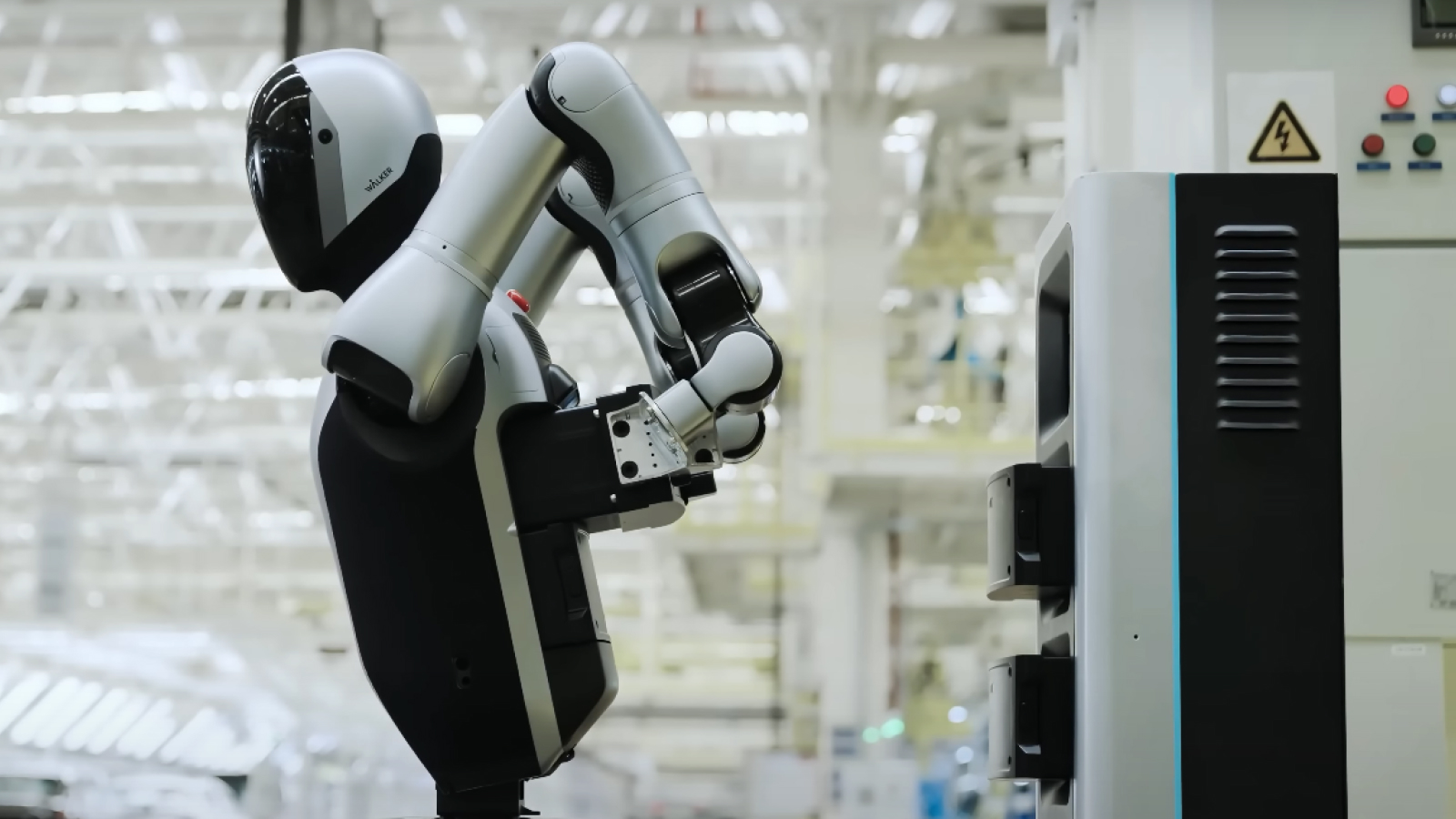China launches world's first robot that can run by itself 24/7 — watch it change its own batteries in unsettling new footage
The Walker S2 humanoid robot, which can change its own battery when it's running low on power, could potentially be left to run on its own forever.
There are many weird and wonderful humanoid robots out there, but one of the most eye-catching machines launched this year can change its own battery pack — making it capable of running autonomously for 24 hours a day, seven days a week.
The Walker S2 robot, made by the Chinese company UBTECH, is 5 foot 3 inches (162 centimeters) tall and weighs 95 pounds (43 kilograms) — making it the size and weight of a small adult.
Using a 48-volt lithium battery in a dual-battery system, the robot can walk for two hours or stand for four hours before its power runs out. The battery takes 90 minutes to fully recharge once depleted.

Its most interesting feature — which UBTECH representatives say is a world first — is that instead of relying on a human operator to remove and recharge its battery pack, the machine can perform this task entirely on its own.
In new promotional footage published July 17 on YouTube, the Walker S2 robot is seen approaching a battery charging station to swap out its battery supply. Facing away from the station, it uses its arms to remove the battery pack fitted into its back and places this into an empty slot to recharge. It then removes a fresh battery pack from the unit and inserts it into its port.
The robot will swap out its own battery in the event that one of its batteries runs out of power. It is also capable of detecting how much power it has left and decides whether it is best to swap out one of its batteries or charge based on the priority of its tasks, company representatives said, as reported by the Chinese publication CnEVPost.
The Walker S2, which is designed to be used in settings like factories or as a human-like robot to meet and greet customers at public venues, has 20 degrees of freedom (the number of ways that joints or mechanisms can move) and is also compatible with Wi-Fi and Bluetooth.
Get the world’s most fascinating discoveries delivered straight to your inbox.

Keumars is the technology editor at Live Science. He has written for a variety of publications including ITPro, The Week Digital, ComputerActive, The Independent, The Observer, Metro and TechRadar Pro. He has worked as a technology journalist for more than five years, having previously held the role of features editor with ITPro. He is an NCTJ-qualified journalist and has a degree in biomedical sciences from Queen Mary, University of London. He's also registered as a foundational chartered manager with the Chartered Management Institute (CMI), having qualified as a Level 3 Team leader with distinction in 2023.
You must confirm your public display name before commenting
Please logout and then login again, you will then be prompted to enter your display name.



